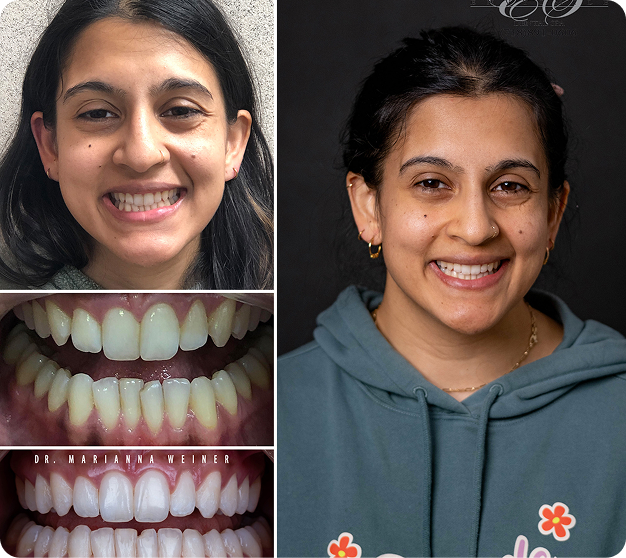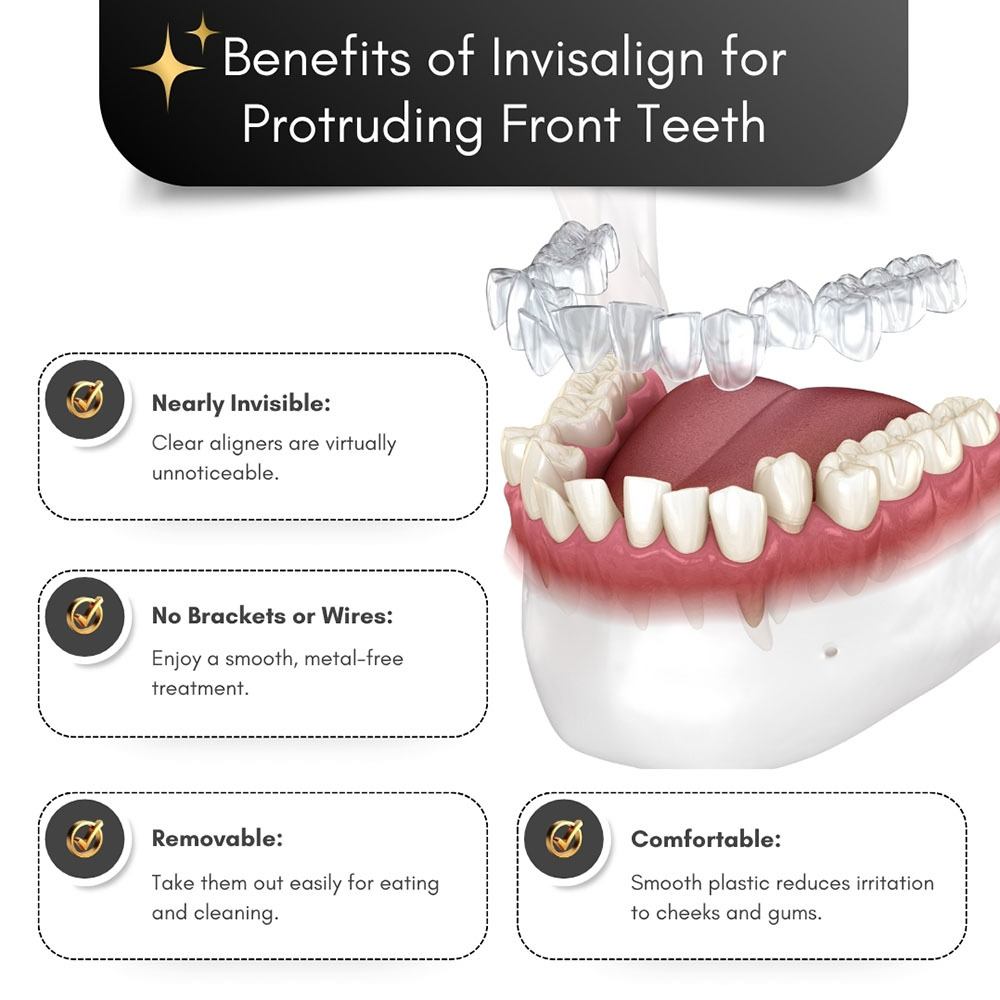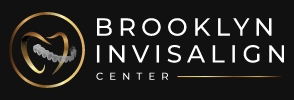Why Do Front Teeth Protrude?
When someone has front teeth that protrude, you may hear them referred to as having buck teeth. In reality, the proper name for this issue is an overjet. There are several reasons why an overjet can develop, described below.
Oral Habits
Oral habits that include thumb or finger sucking, pacifier use, and tongue thrusting can change the shape of the upper jaw. For example, if you suck your thumb, then it rests behind your upper front teeth, gradually pulling these teeth outward while elongating the upper jaw.
When oral habits like thumb or finger sucking or pacifier use continue past age three or four when your permanent teeth are developing, it can create problems with the alignment of your upper front teeth.
Genetics
Some people are born with unevenly aligned jaws. In this case, the upper jaw may be overdeveloped, or the lower jaw may be underdeveloped. You will likely have a similar issue if your parents or siblings have protrusive front teeth.
Spacing or Crowding Issues
When teeth are incorrectly spaced or missing, or if you have extra teeth, it can impact how your front teeth are aligned, resulting in them protruding.
Patient Experience
Do I Need to Correct an Overjet?
Some people do not wish to correct their overjet, but if you feel self-conscious about the appearance of your front teeth, it’s worth investigating Invisalign treatment.
Also, there are some potential health risks. These can depend on the severity of the overjet and whether it prevents your teeth from biting together normally.
Some of the issues that an overjet can cause include:
- Speech difficulties.
- Breathing issues.
- Problems chewing.
- Pain or discomfort when chewing or biting.
- Changes to facial appearance if you cannot close your lips over your buck teeth.

How Can Invisalign Treat Protruding Front Teeth?
Invisalign uses clear plastic aligners to push teeth into the proper positions. In certain circumstances, it can push front teeth back, provided they have enough room to move into the correct positions.
Other Conditions Treated With Invisalign
See also list of other types of uneven bite successfully treated with Invisalign aligners.
- Invisalign for Overbite
- Invisalign for Crossbite
- Invisalign for Crowded Teeth
- Invisalign for Underbite
- Invisalign for Gap Teeth
- Invisalign for Open Bite
What Are the Benefits of Using Invisalign for Front Teeth Protrusion?
If Invisalign is suitable for your buck teeth, you can look forward to a smooth, easy treatment.

Benefits include:
- Invisalign aligners are clear and virtually invisible.
- No brackets or wires are required to move your teeth.
- The aligners are removable for meals and oral care.
- Invisalign aligners are smooth without any hard edges to dig into cheeks or gums, making treatment more comfortable.
The process for correcting your overjet with Invisalign is outlined below.
Initial Consultation
An initial consultation with our best Invisalign dentist determines if this is the right treatment for you or if another solution will work better.
Treatment Planning
The next stage is to take diagnostic 3-D images to plan how your teeth will move. The treatment plan is created with Invisalign’s proprietary software, which produces virtual images showing the predicted results. You can view these images before you begin treatment to ensure you are happy with the plan.
At this stage, you will also learn how many aligners are needed to move your teeth. If your teeth are only mildly protrusive, treatment could be fairly quick.
Wearing Your Aligners
Once you have approved your treatment plan, your aligners will be created. Brooklyn Invisalign Center show you how to insert and remove them and keep them clean. Every set of aligners is worn for two weeks before you discard them for the next set in the series. We also advise you on how to prepare an orthodontic emergency kit in case of unexpected issues like discomfort or a damaged aligner.
What if I Don’t Have Enough Room for Invisalign Treatment?
If there isn’t enough space for the teeth to move back into their proper places, you may need tooth extractions. Removing a tooth such as a premolar will create more room for your teeth to be moved backward.
Removing teeth may mean you can go ahead with Invisalign treatment plan. Otherwise, you may need more specialized orthodontic care.
“ I’m currently in the process of fixing my teeth with Invisalign. All of the staff are friendly and kind. The office is clean and inviting. I would highly recommend! “

Tiana Jacobs Invisalign Patient
When Is Invisalign Not the Best Treatment Choice?
Most cases of an overjet are due to dental problems, which are easy to fix with Invisalign. In contrast, skeletal problems that have caused buck teeth may require orthognathic surgery to correct in conjunction with orthodontic treatment.
This may be the case if you have a significantly underdeveloped lower jaw or an upper jaw that is significantly overdeveloped and are an adult where your teeth and jaws have stopped growing and developing.
Invisalign may be suitable after orthognathic surgery, but extreme cases of malocclusion may be better addressed with fixed orthodontic treatment.
If buck teeth are due to oral habits, then a palatal expander may be suitable for treating adolescents or children whose teeth and jaws are still growing and developing. Palatal expansion can widen the upper jaw, creating enough room so the buck teeth can be moved back into the proper positions, correcting teeth protrusion without extraction.
Comparison of Invisalign and Other Orthodontic Appliances
- Invisalign vs Breezy Braces
- Invisalign vs SureSmile
- Invisalign vs Clear Braces
- Invisalign vs Traditional Braces
Discovering Your Options for Correcting Protrusive Teeth
An initial examination will determine any problems and their causes. We can then discuss suitable treatment options. These options may include Invisalign, braces, palatal expansion, or other solutions.
Related Articles
If you are concerned about protrusive teeth or have a child in your family whose teeth look like they are protruding too far, contact our clinic to schedule an appointment with our orthodontist. We are here to help and answer any of your questions about Invisalign for crowded teeth and other treatments available.

